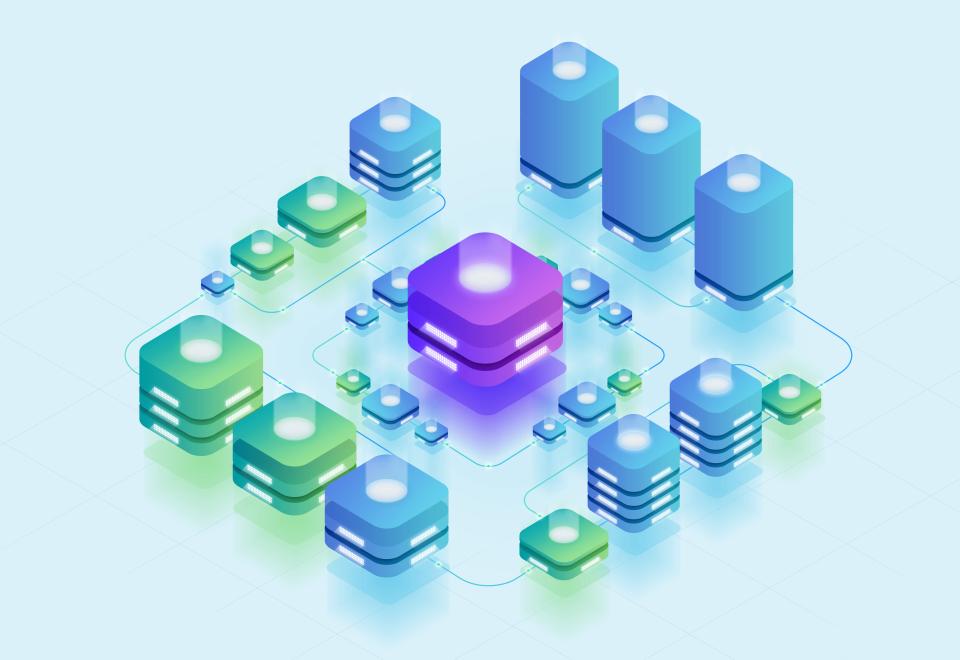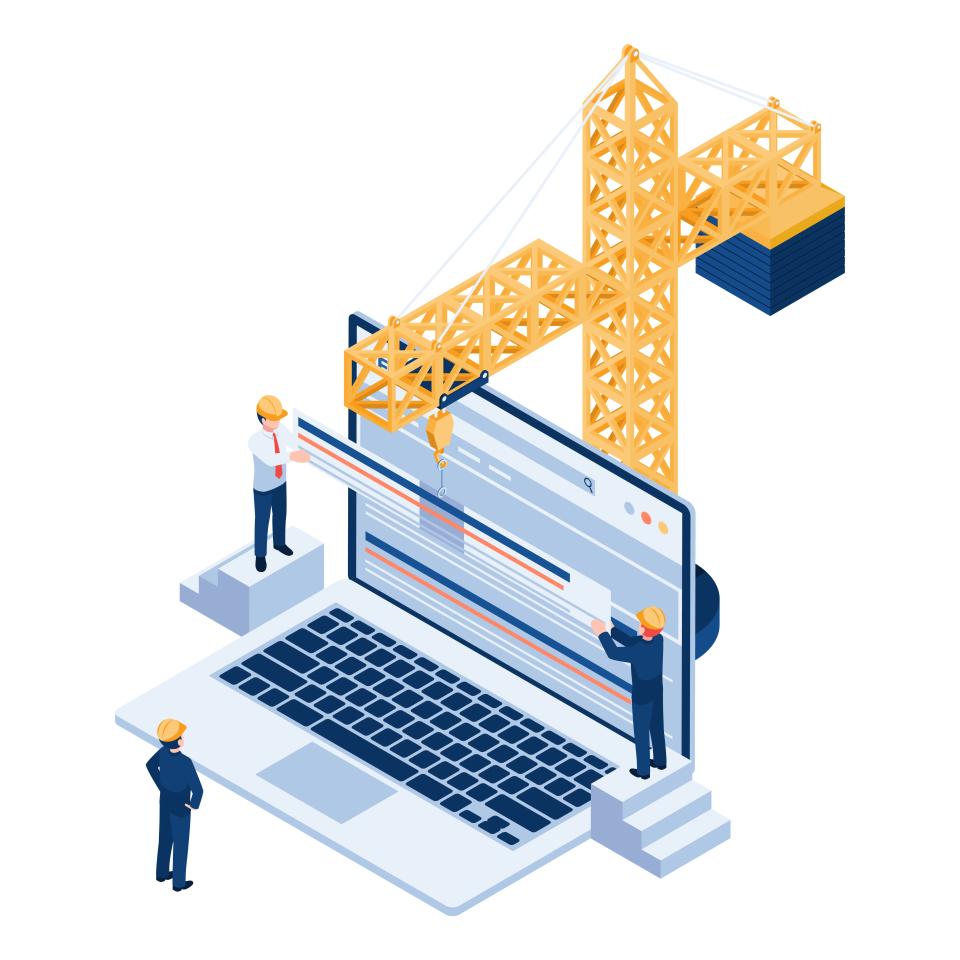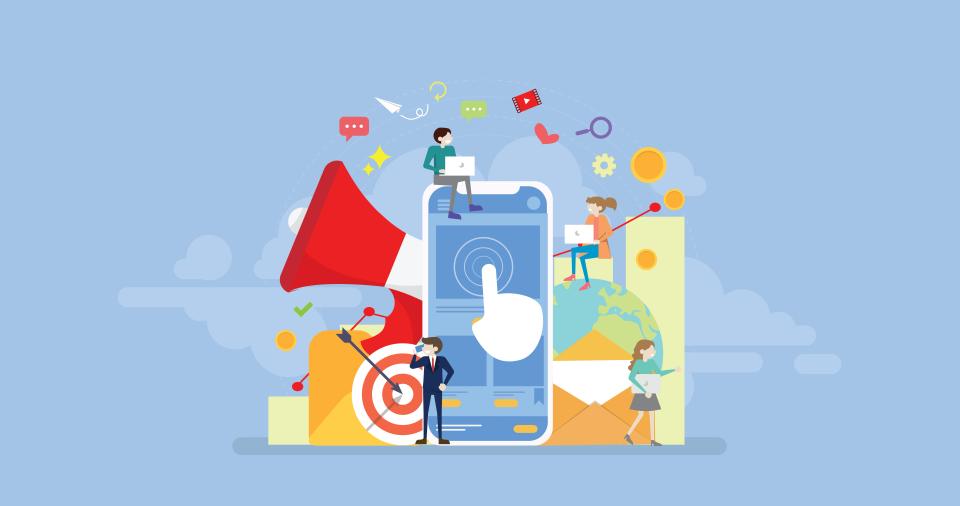Are you pouring your heart, soul, and marketing budget into driving traffic to your e-commerce store, only to watch those potential sales vanish into thin air? It’s a gut-wrenching feeling, like trying to fill a bucket riddled with holes. This "leaky bucket syndrome" plagues countless online businesses, but here’s the good news: you can fix it.
So, what’s the secret weapon? It’s called Conversion Optimization, or CRO. In the bustling world of e-commerce, CRO is the art and science of transforming casual website visitors into loyal, paying customers or valuable, qualified leads. It’s not just about pretty designs; it’s about strategic, psychological triggers that guide users to take the actions you want them to take.
Why should this be your absolute obsession? Because effective CRO directly skyrockets your Return on Investment (ROI), slashes your customer acquisition costs, and pumps up your overall profitability, helping you boost online sales like never before. This isn't just tweaking; it's transforming. In this guide, we’ll unveil powerful, actionable ecommerce website conversion techniques, focusing on the critical pillars of User Interface/User Experience (UI/UX) and compelling Calls-to-Action (CTAs). At CaptivateClick, we've spent over 15 years helping businesses transform their online stores into relentless conversion machines, and now we're sharing some of that hard-won wisdom with you.
Laying the Foundation: Understanding Your Customer & Their Journey
Before you change a single button or rewrite a headline, you must dig deep. You need to understand who you’re talking to and what makes them tick. This isn't guesswork; it's strategy.
Know Your Audience: The Heartbeat of Your Strategy
Ever tried selling steak to a vegetarian? It doesn’t work. That’s why detailed buyer personas are non-negotiable for e-commerce success. These aren't just vague descriptions; they are semi-fictional representations of your ideal customers, based on data and research. Knowing their demographics, pain points, motivations, and buying behaviors allows you to tailor every aspect of your site to resonate deeply with them. For instance, HubSpot’s data reveals that personalized landing pages based on persona preferences can lift conversions by a staggering 35%[9].
Beyond who they are, you must grasp their intent. Are they just browsing (navigational), seeking information (informational), or ready to pull out their wallets (transactional)? Each intent requires a different approach, a different path. Understanding this allows you to meet them where they are, guiding them smoothly towards conversion.
This deep understanding fuels everything. It ensures your messaging hits home, your offers are irresistible, and your design choices feel intuitive and welcoming to your specific audience. Without it, you're just shouting into the void.
Mapping the E-commerce Customer Journey: From Stranger to Advocate
Imagine your customer’s path to purchase as a roadmap. This journey typically flows through several key stages: Awareness (they discover your brand), Consideration (they evaluate your offerings), Decision (they choose you), Purchase (they buy!), and Retention (they come back for more). Your mission is to make this journey as smooth and delightful as possible.
Each stage has critical touchpoints – your ads, your homepage, product pages, checkout process, and post-purchase emails. By mapping this journey, you can pinpoint potential friction areas and drop-off points where you might be losing customers. Are they getting lost in navigation? Confused by product options? Abandoning carts at the last second? Google Analytics’ e-commerce reports are invaluable here, with features like the Shopping Behavior Analysis tab helping to identify precisely where users abandon carts[5].
Understanding this flow allows you to proactively address bottlenecks. You can then optimize each touchpoint to gently nudge visitors towards the next step, ensuring they don’t just start the journey, but complete it – and return.
Data is Your Best Friend: Uncovering Hidden Opportunities
Stop guessing, start knowing. Before you dive into optimizing, you need a clear picture of what’s actually happening on your site. Tools like Google Analytics, heatmaps (which show where users click and scroll), and session recordings (videos of actual user interactions) are your eyes and ears on the ground.
These tools reveal the unvarnished truth about user behavior. Google Analytics can show you which pages have high bounce rates, where users drop off in your sales funnel, and how different traffic sources perform. Integrating heatmaps with GA data further contextualizes why users might be leaving certain pages[5], providing crucial insights for targeted redesigns.
This data-driven approach removes assumptions and empowers you to make informed decisions. It highlights the problem areas that need the most urgent attention, ensuring your optimization efforts are focused, effective, and deliver real results.
UI/UX Design: Crafting a Seamless Path to Purchase
Your website's design isn't just about looking good; it's about working brilliantly. A powerful UI/UX (User Interface/User Experience) is the invisible hand that guides your visitors, making their journey intuitive, enjoyable, and ultimately, persuasive. This is where many e-commerce sites win or lose the battle for sales.
First Impressions Matter: Homepage & Landing Page Optimization
You get one shot – mere seconds – to make a first impression. Your homepage and key landing pages must instantly communicate your unique value proposition. What do you sell? Why should they buy from you? This message needs to be crystal clear, compelling, and hit them right between the eyes.
High-quality imagery and videography are essential; they grab attention and convey product quality far better than words alone. In fact, Shopify highlights that high-resolution images with zoom functionality can boost conversions by an impressive 27%[15]. Combine this with intuitive navigation – clear menus, logical categories, and a prominent search bar – and you’re setting the stage for a positive user experience from the very first click.
Think of your homepage as your digital storefront. It needs to be inviting, easy to navigate, and immediately show visitors they’re in the right place to find what they need. This initial positive experience builds trust and encourages deeper exploration.
Streamlined Navigation & Product Discovery: Don't Make Them Think!
Lost customers don't buy. If visitors can't easily find what they're looking for, they'll bounce – straight to your competitor. A streamlined navigation system and effortless product discovery are paramount for UI/UX for ecommerce. This means a logical category structure that makes sense to your users, not just to you.
Effective filtering and sorting options are your secret weapons here. Allow users to quickly narrow down choices by price, size, color, brand, or other relevant attributes. Accenture’s research indicates that preference-based filters significantly reduce decision fatigue[12], making the shopping process less overwhelming and more enjoyable. Breadcrumbs – those little navigational trails like "Home > Category > Product" – also play a vital role by showing users exactly where they are and making it easy to backtrack.
The goal is to make finding products feel effortless, almost subconscious. The less cognitive load you place on your visitors, the more likely they are to stay, explore, and ultimately, convert. For more on this, explore how brand-aligned UX for trust-building can make a difference.
Compelling Product Pages that Convert: Where Desire Turns into Decision
This is where the magic happens – or doesn't. Your product pages are your digital sales reps. They need to be persuasive, informative, and build an undeniable desire for your product.
High-Quality Visuals are King. Multiple, crystal-clear product images from various angles, zoom functionality, and product videos are no longer luxuries; they're necessities. Shopify notes that a significant 65% of shoppers prefer product pages supported by video[15], as it helps them visualize the product in action. Persuasive Product Descriptions must go beyond listing features; they need to scream benefits, painting a picture of how the product will improve the customer's life.
Don't forget Social Proof! Customer reviews, ratings, and testimonials are incredibly powerful. Including these trust elements can lift sales by as much as 15% according to Shopify[15]. Be transparent with Clear Pricing & Shipping Information – no nasty surprises at checkout. And while used ethically, elements of Urgency & Scarcity (e.g., "Only 3 left in stock!" or countdown timers for sales) can provide that extra nudge.
The Frictionless Checkout Process: The Final Hurdle
You’ve wooed them, they’ve added to cart… don’t lose them now! The checkout process is where an alarming number of sales are abandoned. Your goal: make it so smooth, so easy, so frictionless, they barely notice they’re completing a transaction.
Offer a guest checkout option – forcing registration is a notorious conversion killer. Minimize form fields relentlessly; only ask for what is absolutely essential. Baymard Institute’s benchmark data reveals the average checkout flow contains 11.3 fields[7], but also that hiding optional fields can improve completion rates. Use progress indicators to show users where they are in the process and how much is left.
Provide multiple payment options to cater to different preferences. Display trust signals prominently – security badges, SSL certificates – to reassure customers their data is safe. Finally, ensure a clear order summary and make it easy to modify the cart. Baymard also warns against accordion checkouts that hide summarized data[2], as this can force users to reopen steps for verification, increasing frustration.
Mobile-First Design: Non-Negotiable for E-commerce
If your e-commerce site isn't optimized for mobile, you're not just behind the times – you're actively losing money. We're past "responsive design"; it's time for a "mobile-first" approach, where you design for the smallest screen first and then adapt upwards. This ensures the core experience is flawless on the devices your customers use most.
Consider this: Nielsen Norman Group’s analysis reveals that desktop users still generate 2.6 times more revenue per visit than mobile users[1], highlighting a persistent gap in mobile optimization. Furthermore, their 2017 data showed mobile devices accounted for 40% of e-commerce traffic but only 24% of revenue[1]. This gap represents a massive opportunity.
Optimizing for touch (larger buttons, ample spacing), readability (clear fonts, good contrast), and especially speed on smaller screens is critical. Every millisecond counts. Prioritizing mobile-optimized checkout experiences isn't just good practice; it's essential for survival and growth in today's e-commerce landscape.
Strategic Call-to-Actions (CTAs): Guiding Users to Convert
Your Call-to-Actions are the signposts of your website. They tell visitors exactly what you want them to do next. Without clear, compelling CTAs, even the most interested prospect can get lost or lose momentum. Mastering CTA best practices is fundamental to driving conversions.
The Anatomy of a High-Converting CTA: More Than Just a Button
What makes a CTA irresistible? It’s a potent cocktail of design, wording, and placement. Your CTA button needs to pop! Use contrasting colors that stand out from the rest of the page, ensure it’s an appropriate size (not too big, not too small), and place it within a clear visual hierarchy so the eye is naturally drawn to it. Consider how a high-converting CTA button design can make a real impact.
The wording is where the persuasion happens. Ditch vague phrases like "Submit" or "Learn More." Instead, use strong, action-oriented verbs that create urgency and clarity: "Shop Now," "Add to Cart," "Get Your Discount Today," "Claim Your Free Sample." BlendB2B advises that CTAs should prioritize clear value propositions[3], telling users exactly what they'll get.
Placement is equally crucial. Position your CTAs where users are most likely to be ready to take action: above the fold on landing pages, within product descriptions, at the end of engaging content, and even as sticky CTAs that remain visible as users scroll. Explore proven CTA placement strategies to maximize their impact.
Primary vs. Secondary CTAs: Offering Choice Without Confusion
Not every visitor is ready to hit "Buy Now" immediately. That's where the strategic use of primary and secondary CTAs comes in. Your primary CTA is your main conversion goal (e.g., "Add to Cart," "Complete Purchase"). It should be the most prominent and visually striking.
However, offering a less committal secondary CTA can capture users who aren't quite ready for the big leap. Think "Add to Wishlist," "Compare Products," or "Save for Later." This keeps them engaged with your brand and products, increasing the likelihood of a future conversion.
The key is to guide users without overwhelming them. Ensure your primary CTA stands out significantly more than any secondary options. This clear visual distinction helps users understand the main desired action while still providing valuable alternatives for those at different stages of their decision-making process.
Contextual CTAs for Lead Generation on E-commerce Sites: Beyond the Buy Button
E-commerce isn't just about immediate sales; it's also about building a pipeline of future customers. This is where e-commerce lead generation comes into play, using CTAs that go beyond the "Buy Now" button. Think about offering valuable content or incentives in exchange for an email address.
Examples include "Sign up for 10% Off Your First Order," "Download Our Free Style Guide," "Get Notified of New Arrivals," or "Join Our VIP Club for Exclusive Deals." BlendB2B highlights that contextual CTAs such as “Notify Me When Back in Stock” can effectively capture leads[3] even when a product is temporarily unavailable. These CTAs turn browsers into leads, allowing you to nurture them through email marketing and guide them back to purchase later.
These lead generation CTAs should be strategically placed throughout your site – on blog posts, category pages, or even as exit-intent popups. They are crucial for building your email list, a powerful asset for long-term customer relationships and repeat sales.
A/B Testing Your CTAs: The Path to Peak Performance
How do you know if your CTA is truly optimized? You test it! A/B testing (or split testing) is the process of comparing two versions of a webpage element – in this case, your CTA – to see which one performs better. Don't assume you know what works best; let your audience tell you through data.
Test everything: different colors, button shapes, sizes, wording (e.g., "Get Your Discount" vs. "Save 20% Now"), and placements. Even small changes can lead to significant uplifts in click-through rates and conversions. BlendB2B emphasizes that consistent A/B testing can increase click-through rates by up to an impressive 30%[3].
Continuously testing and refining your CTAs is a cornerstone of effective conversion optimization. At CaptivateClick, our A/B testing and performance tracking services are designed to systematically identify and implement the highest-performing variations, ensuring your CTAs are always working at their peak.
Advanced E-commerce Conversion Techniques (Beyond the Basics)
Once you've nailed the fundamentals of UI/UX and CTAs, it's time to explore more advanced strategies to squeeze even more conversions from your traffic. These techniques can give you a powerful edge over competitors who are only scratching the surface.
Personalization: Making Every Visitor Feel Special
Imagine walking into a store where the staff knows your preferences and shows you exactly what you’re looking for. That’s the power of personalization in e-commerce. By leveraging user data – browsing history, past purchases, demographics – you can create tailored experiences that resonate deeply. Accenture’s research found that a whopping 91% of consumers prefer brands that offer relevant, tailored experiences[12].
Implement product recommendations like "Customers also bought..." or "You might also like..." based on what others with similar tastes have purchased. Send personalized email offers based on items they’ve viewed or added to their cart but not purchased. The more relevant you can make the shopping experience, the higher the engagement and conversion rates will be.
This isn't just about showing different products; it's about making each visitor feel understood and valued. This fosters loyalty and encourages them to see you as their go-to source.
Exit-Intent Popups (Use Wisely): The Last Chance Saloon
Just as a visitor is about to leave your site – perhaps moving their cursor towards the back button or to close the tab – an exit-intent popup can be your last chance to convert them or capture their information. When used thoughtfully, these can be surprisingly effective. OptinMonster’s technology, for example, can recover up to 15% of abandoning visitors[13].
The key is to offer genuine value. A last-minute discount ("Wait! Get 10% off your order if you complete it now!"), free shipping, or a valuable lead magnet (like an ebook or checklist) can entice users to stay or at least provide their email. OptinMonster case studies show that offering discounts or free shipping in these popups can increase conversion rates by 22%[13].
However, use them wisely. Ensure they are easy to close and don't disrupt the user experience if someone genuinely isn't interested. A well-timed, valuable offer can turn a lost visitor into a customer or a lead.
Live Chat & Chatbots: Instant Answers, Increased Sales
Got questions? Get answers – instantly! In today's fast-paced digital world, customers expect immediate support. Live chat and AI-powered chatbots can provide real-time assistance, answer pre-sale questions, and guide users through the purchase process, significantly reducing friction and uncertainty.
Live chat allows potential customers to connect with a human support agent to resolve complex issues or get personalized advice. Chatbots can handle common queries 24/7, qualify leads, and even direct users to relevant product pages or resources, freeing up your human team for more complex interactions.
Providing this instant support channel can be the difference between a sale and an abandoned cart. It builds trust, shows you care about the customer experience, and helps overcome objections right when they arise.
Optimizing for Site Speed & Performance: Every Second Counts
Is your website a speed demon or a sluggish snail? In e-commerce, site speed isn't just a technical detail; it's a critical conversion factor. Slow-loading pages frustrate users, increase bounce rates, and can even harm your search engine rankings. Neil Patel’s analysis reveals that pages loading in just 2 seconds convert 50% higher than those taking 5 seconds[18] – a massive difference!
Focus on optimizing images, minifying code, leveraging browser caching, and choosing a reliable hosting provider. Tools like Google PageSpeed Insights can help you identify areas for improvement. The impact is direct: Lucky Orange correlates site speed with Core Web Vitals, noting that a mere 0.1-second improvement in Largest Contentful Paint (LCP) can boost conversions by 7%[20]. Understanding site speed’s role in reducing bounce rates is crucial, and CaptivateClick’s performance optimization services can help you achieve lightning-fast load times.
A fast, responsive website provides a superior user experience, keeps visitors engaged, and directly contributes to higher conversion rates. Don't let a slow site sabotage your sales.
Building Trust & Credibility: The Foundation of E-commerce Success
People buy from businesses they trust. In the anonymous world of online shopping, building trust and credibility is paramount. Every element of your website should contribute to making visitors feel safe and confident in their decision to purchase from you.
Clearly display your return policies, shipping information, and customer service contact details. An "About Us" page that tells your brand's story and introduces your team can humanize your business and build rapport. Prominently feature security seals (like SSL certificates and payment gateway logos) and any guarantees you offer.
Customer reviews, testimonials, and case studies also play a huge role in building social proof and credibility. When visitors see that others have had positive experiences with your brand, they are much more likely to trust you with their business.
Measuring Success: Key Metrics for E-commerce CRO
You can't improve what you don't measure. To truly understand the impact of your conversion optimization for eCommerce efforts and identify areas for further improvement, you need to consistently track key performance indicators (KPIs). These metrics provide the data-driven insights necessary to refine your strategies and improve e-commerce conversion rate over time.
Your overall Conversion Rate is the big one – the percentage of visitors who complete a desired action (usually a purchase). Track this not just site-wide, but also by traffic source, device type, and even for specific campaigns to understand what’s truly driving results. Another critical metric is Average Order Value (AOV); increasing this means each converting customer is spending more.
Keep a close eye on your Cart Abandonment Rate. Baymard Institute research indicates that a significant 18% of checkout abandonments stem from an overly long or complicated checkout process[7], highlighting a key area for optimization. Similarly, monitor Bounce Rate on key pages like your homepage, product pages, and landing pages; a high bounce rate often signals a poor user experience or a mismatch between visitor expectations and page content. Lucky Orange data shows that slow sites can suffer 32% higher bounce rates if pages take longer than 3 seconds to load[20]. Finally, understanding Customer Lifetime Value (CLV) helps you gauge the long-term profitability of your customers and informs retention strategies.
Conclusion: Turn Your E-commerce Site into a Sales Powerhouse
Stop leaving money on the table. That leaky bucket? You have the tools to patch it, transforming your e-commerce website from a passive online brochure into a relentless sales-generating machine. A strategic, data-driven approach to conversion optimization for eCommerce isn't a luxury; it's the lifeblood of online success.
Remember, this isn't a one-and-done task. The digital landscape is always shifting, customer expectations evolve, and your competitors are constantly upping their game. Continuous testing, meticulous analysis, and agile refinement are the keys to staying ahead and consistently improving your results. By diligently implementing these ecommerce website conversion techniques, you can dramatically boost online sales, supercharge your lead generation, and build a more profitable, resilient e-commerce business.













